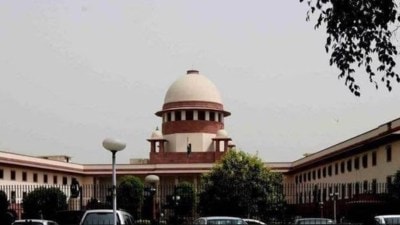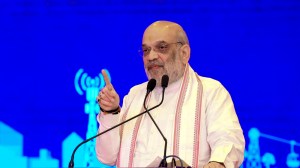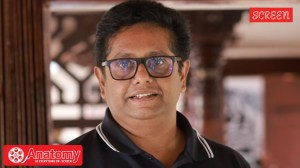GSLV takes off with Edusat from Sriharikota range
The Indian Space Research Organisation (ISRO) today successfully launched India’s first-ever exclusive educational satellite Edusat on ...

The Indian Space Research Organisation (ISRO) today successfully launched India’s first-ever exclusive educational satellite Edusat on the Geosynchronous Satellite Launch Vehicle (GSLV) from Sriharikota.
As the rocket blasted off into the overcast skies at precisely 4.01 p.m, it created several firsts in India’s 25-year-old satellite history — Edusat is the first-ever thematic satellite (for education), the GSLV’s first operational flight and the heaviest satellite (1,950kg) launched by ISRO.
Edusat, the country’s 19th satellite, also wiped off ISRO’s unpleasant memories of an unsuccessful launch of the PSLV-D1 the same day, 11 years ago. For the 414-tonne GSLV powered by the Russian Cryogenic engine, it was a hat-trick after the two test flights of GSAT-1 and GSAT-2 satellites in April 2001 and May 2003.
‘‘It is a proud moment for the country. My team has done it again.. It is one of the most precision launches ever from Sriharikota,’’ a beaming ISRO chairman G.Madhavan Nair said.
Immediately after the launch, Prime Minister Manmohan Singh called up from London to congratulate the ISRO chairman for the ‘‘shining example of dedicated and committed teamwork’’.
Yesterday’s heavy downpour threatened to botch up the launch plans, but fortunately the weather conditions improved, providing for a perfect lift-off. ‘‘We thought we had to postpone the launch. But with our meteorological monitoring facility through radars, at 9.30 am today we decided to go ahead with the launch as scheduled,’’ Nair said.
‘‘The trajectory was perfect, the performance is excellent,’’ he said. Edusat has been placed at the initially-intended geo-synchronous transfer orbit (GTO) at 190 kms perigee and 35,900 kms apogee. From the GTO, the satellite will reach the GSO, in the next few days.
According to the ISRO chairman, the Rs 90-crore Edusat would ‘‘revolutionise’’ education in the country and would help transmit lectures from virtual classrooms to ‘‘100 to 200 classrooms through each beam covering five regions’’ and provide for audio and video interaction between teachers and students. ‘‘It will be done free of cost,’’ he added. As of now, ISRO plans to rope in 20 educational institutions and has already signed MoUs with six universities and IITs. Admitting that designing content was a ‘‘slight concern’’, Nair said it could be sourced from UGC and universities.
Nair said the cryogenic engine developed by India was now undergoing ground tests and ‘‘within one year, it would be flight worthy’’.
The ISRO planned to launch all INSAT Class- 210 satellites by the GSLV, which had been designed at a cost of Rs 160 crore.
On ISRO’s proposed moon mission, he said ‘‘it was going on well’’ and would be launched as scheduled in 2007. About the explosion at Sriharikota space centre in February, Nair said ‘‘it was a freak accident’’ caused by a leakage in the casting of solid propellant.
The turnover of Antrix, ISRO’s commercial arm, has increased from Rs 100 crores to Rs 300 crore and had made a profit of Rs 30 crore this fiscal. Prime Minister Manmohan Singh’s Principal Secretary T.K.A. Nair was in Sriharikota to witness the launch.
Photos





- 01
- 02
- 03
- 04
- 05


























